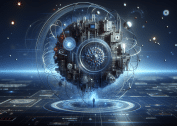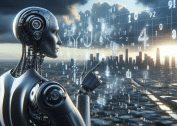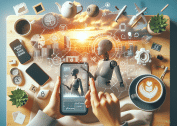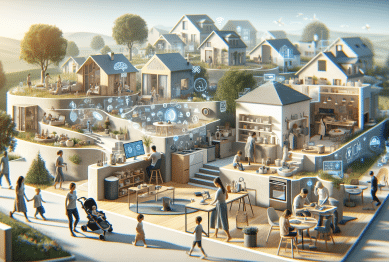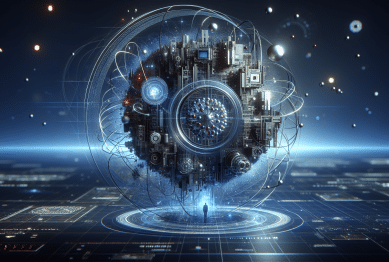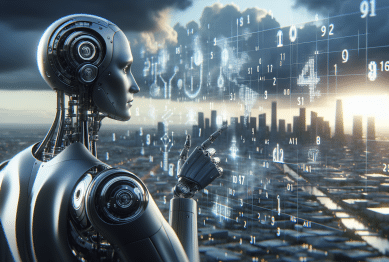Artificial intelligence is transforming everyday experiences in surprising and subtle ways. See how AI is shaping everything from communication to transportation and health, and uncover what this means for people navigating a rapidly changing tech landscape. Dive in for an accessible, human-focused guide to the real-world impact of artificial intelligence.
How Artificial Intelligence Powers Everyday Experiences
It’s fascinating to realize how artificial intelligence quietly supports so many aspects of life. Smart assistants that respond to your voice, email spam filters that stop unwanted messages, and personalized shopping suggestions all rely on AI algorithms working behind the scenes. This technology uses advanced data analysis to predict preferences, answer questions, and streamline countless daily interactions. The integration of everyday AI is so seamless that sometimes it’s hard to notice until a process feels especially quick or convenient.
Across industries, artificial intelligence has become the invisible engine powering many familiar applications. In banking, AI monitors accounts for unusual activities and helps to prevent fraud. In transportation, AI enables navigation apps to interpret live traffic data and reroute vehicles for shorter commutes. The accuracy and speed within these systems are possible because of machine learning—a core concept in AI—where programs improve their own performance based on experience and more data.
Even the ways people communicate have changed as AI handles much of the sorting, predicting, and suggesting in messaging platforms. Predictive text, language translation tools, and chatbots offering customer service are common touchpoints. Artificial intelligence also helps make these interactions accessible for those with vision or hearing challenges. This broadens participation and increases connection between individuals across the world, making AI in daily experience more inclusive and impactful.
Key Artificial Intelligence Technologies and How They Work
Artificial intelligence covers a variety of technologies, but some terms routinely surface in everyday discussions. Machine learning is perhaps the most well-known. It allows systems to discover patterns and make predictions without explicit programming for each task. Deep learning, a specialized form of machine learning, uses ‘neural networks’ inspired by the structure of the human brain. Deep learning powers image recognition on social media and voice assistants, making them more precise over time.
Natural language processing (NLP) is another cornerstone, letting computers understand and generate human speech or text. This is what lets a search engine provide useful answers and a virtual assistant understand spoken requests. Computer vision, meanwhile, equips programs to interpret pictures or video, fueling applications like facial recognition, autonomous vehicles, and accessibility features for the visually impaired.
Robotics represents a physical extension of AI, bringing algorithms into the world as robots that can move, sense, and interact with their environment. From vacuum cleaners that map your home to sophisticated manufacturing arms, these machines demonstrate how artificial intelligence bridges software and the tangible world. With these core technologies, AI continues to evolve into more than just data—it’s becoming an active agent in everyday physical spaces.
Artificial Intelligence Enhancing Healthcare and Wellness
The health sector is seeing rapid growth in artificial intelligence adoption. AI-driven diagnostics analyze medical images and patient data to flag potential health issues, sometimes catching conditions that human eyes might overlook. Chatbots offer basic triage or mental wellness check-ins, often reducing wait times and making healthcare more accessible. These innovations improve outcomes and let medical staff spend more time with individuals who need extra care.
Wearable technology, powered by AI, now tracks heart rates, sleep patterns, and activity levels throughout the day. These insights allow for early warning signs to be identified and support healthier habits for individuals. Machine learning models also help researchers explore treatment effectiveness, predictive analytics for disease progression, and vaccine development, accelerating the pace of breakthroughs in both digital health and pharmaceutical research (Source: https://www.nih.gov/health-information/artificial-intelligence).
AI assists in managing appointments, automating paperwork, and translating between languages during doctor visits. This can lower administrative burdens and increase efficiency across medical systems. As more health data is collected from wearables and electronic medical records, the role of AI in personal and community wellness only deepens—though it also raises thoughtful conversations about privacy, consent, and ethical oversight of sensitive information.
Smart Homes, IoT, and Everyday AI Integration
Smart home devices have brought artificial intelligence into living rooms, kitchens, and bedrooms. Voice-activated assistants let users control lighting, thermostats, security, and entertainment with spoken commands. Connected appliances can learn routines, manage energy use, and provide alerts about maintenance needs, making home management much smarter and more efficient (Source: https://www.nist.gov/news-events/news/2023/04/artificial-intelligence-and-internet-things-together-help-create-smarter-systems).
The Internet of Things (IoT) refers to this network of connected sensors and devices, all coordinated by AI algorithms for real-time response and adaptability. Refrigerators can suggest recipes based on what’s inside, security cameras send alerts if unfamiliar faces appear, and vacuuming robots map the home’s layout to optimize cleaning. AI interprets streams of sensor data, automating tasks and sometimes predicting problems before they arise.
For people with disabilities or those seeking extra safety, smart technology offers peace of mind. Automated lights assist those with mobility challenges, while fall detection systems sense accidents and can alert caregivers. As IoT networks grow, potential for tailored, responsive digital environments expands, making AI-driven living more comfortable and empowering for diverse households.
AI Transforming Mobility and Transportation
Artificial intelligence revolutionizes how people travel. Real-time route optimization, ride-sharing platform efficiency, and predictive vehicle maintenance are just a few examples. Modern navigation apps use AI to assess traffic patterns, dynamically adjusting routes to save time and reduce congestion. AI’s reach in transportation continues to expand, making journeys safer, smoother, and often more affordable for daily commuters.
Perhaps the most visible example is in autonomous vehicles. Self-driving technology integrates complex AI models interpreting sensor, camera, and radar data to make split-second decisions on the road (Source: https://www.nhtsa.gov/technology-innovation/automated-vehicles-safety). While truly driverless cars remain in development, many new vehicles offer adaptive cruise control, lane assist, or even self-parking features powered by AI. These innovations represent tangible steps toward safer and more adaptable transport networks.
Public transportation is also benefiting from AI, as dynamic scheduling adapts to ridership changes and predictive maintenance tools monitor vehicles for potential issues. This means fewer delays and improved reliability for city populations. As data sources multiply, mobility systems can continually refine operations, reducing energy use and helping large cities manage increasingly complex transit needs.
Navigating Ethics and Privacy in Artificial Intelligence
The rise of artificial intelligence brings important ethical questions to the forefront. AI systems often rely on huge datasets, which can sometimes contain personal or sensitive information. People want to know how their data is being collected, secured, and used by these intelligent platforms. Technologists and policymakers are now focused on developing clear, transparent frameworks for privacy and responsible AI use (Source: https://www.oecd.org/going-digital/ai/principles/).
Bias in AI algorithms is another major concern. If the training data doesn’t accurately reflect all users, systems may unintentionally disadvantage certain groups or produce skewed results. Diverse development teams and ongoing oversight are key to creating fairer, more representative AI technologies. Transparency in how decisions are made helps build trust between technology developers and wider communities.
Both industry standards and international guidance are evolving to ensure safety, equity, and ethical conduct in artificial intelligence. From robust data encryption practices to thorough audits of AI’s impact, the goal is to maximize AI’s benefits while minimizing risk. This ongoing collaboration among governments, industries, and citizens will shape the future trajectory of technology’s role in everyday life.
References
1. National Institutes of Health. (n.d.). Artificial Intelligence. Retrieved from https://www.nih.gov/health-information/artificial-intelligence
2. National Institute of Standards and Technology. (2023). Artificial Intelligence and Internet of Things Together Help Create Smarter Systems. Retrieved from https://www.nist.gov/news-events/news/2023/04/artificial-intelligence-and-internet-things-together-help-create-smarter-systems
3. U.S. Department of Transportation, National Highway Traffic Safety Administration. (n.d.). Automated Vehicles for Safety. Retrieved from https://www.nhtsa.gov/technology-innovation/automated-vehicles-safety
4. Organisation for Economic Co-operation and Development (OECD). (n.d.). OECD Principles on Artificial Intelligence. Retrieved from https://www.oecd.org/going-digital/ai/principles/
5. Brookings Institution. (n.d.). How artificial intelligence is transforming the world. Retrieved from https://www.brookings.edu/articles/how-artificial-intelligence-is-transforming-the-world/
6. Future of Life Institute. (n.d.). Benefits & Risks of Artificial Intelligence. Retrieved from https://futureoflife.org/background/benefits-risks-of-artificial-intelligence/



